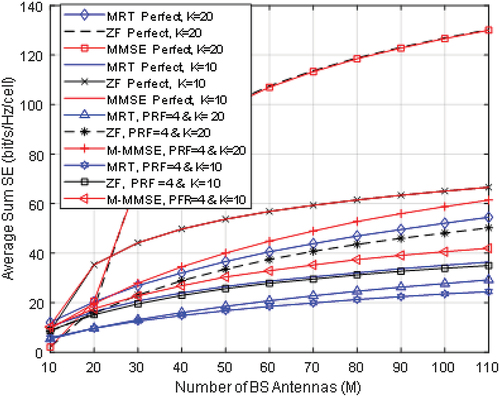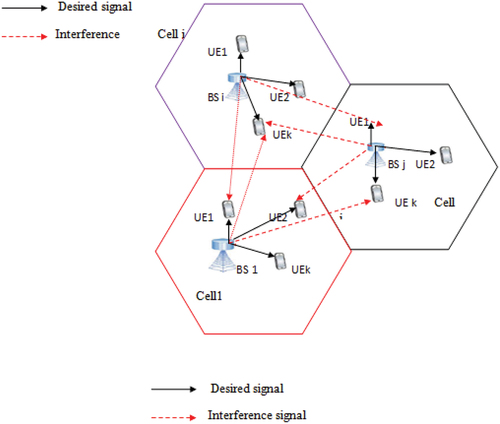Figures & data
Figure 2. NLOS propagation under local scattering spatial correlation model (Bjornson et al., Citation2017).

Figure 3. Uplink Pilot Contamination in a multi cell scenario where BS i in cell i receive pilots from adjacent cell (Zhao et al., Citation2017).
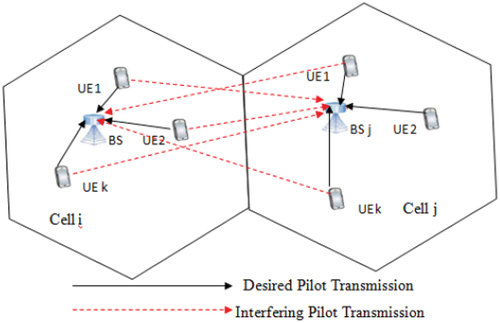
Figure 4. Block diagram representation of a multi-cell DL Ma-MIMO system with linear precoding (Marzetta & Quoc Ngo, Citation2016).
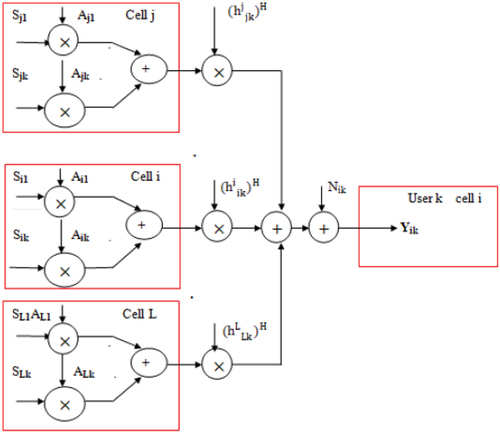
Table 1. Parameters and values
Figure 5. Average sum SE with respect to the number of BS antennas for M-MMSE, ZF and MRT precoding techniques (for a PRF of one, three and four and K=10).
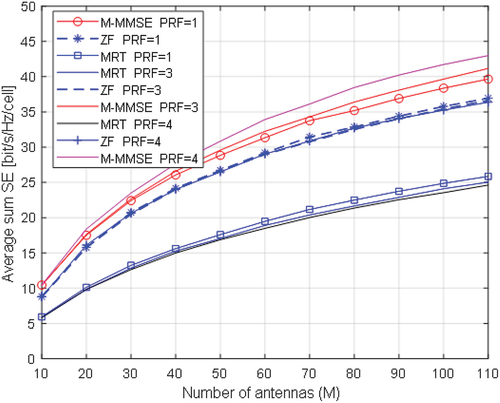
Figure 6. Average sum SE with respect to the number of BS antennas for M-MMSE, ZF and MRT precoding techniques (for a PRF of one and M=100).
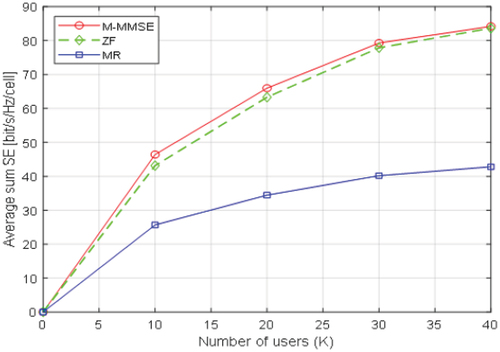
Figure 7. Average sum SE with respect to the number of users for M-MMSE, ZF and MRT. Precoding techniques (for a PRF of three and M=100).
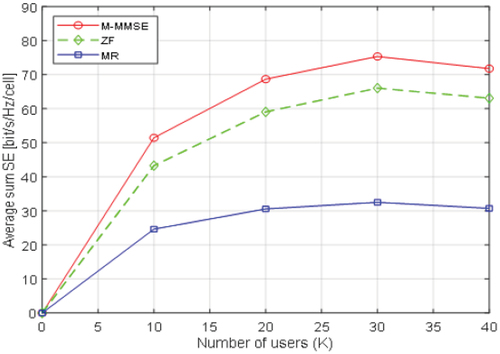
Figure 8. Average sum SE with respect to the number of users for M-MMSE, ZF and MRT. Precoding techniques (for a PRF of four and M=100).
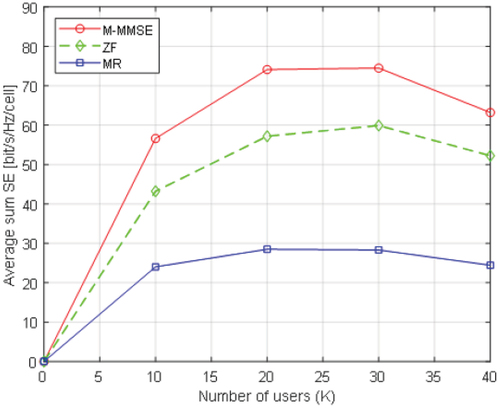
Figure 9. Average sum SE with respect to the number of Antennas for MMSE, ZF and MRT precoding techniques with perfect and imperfect CSI (PRF of one) and K = 10.
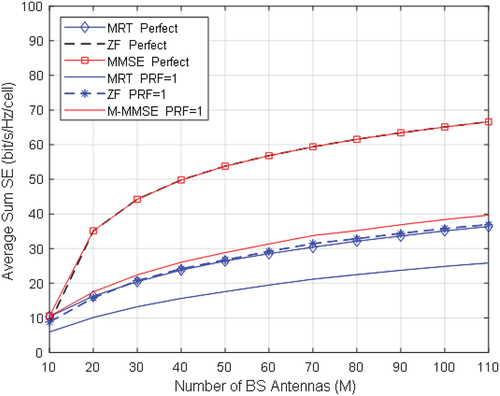
Figure 10. Average sum SE with respect to the number of Antennas for MMSE,ZF and MRT precoding techniques with perfect and imperfect act CSI (PRF of four) and K = 10, K = 20.
